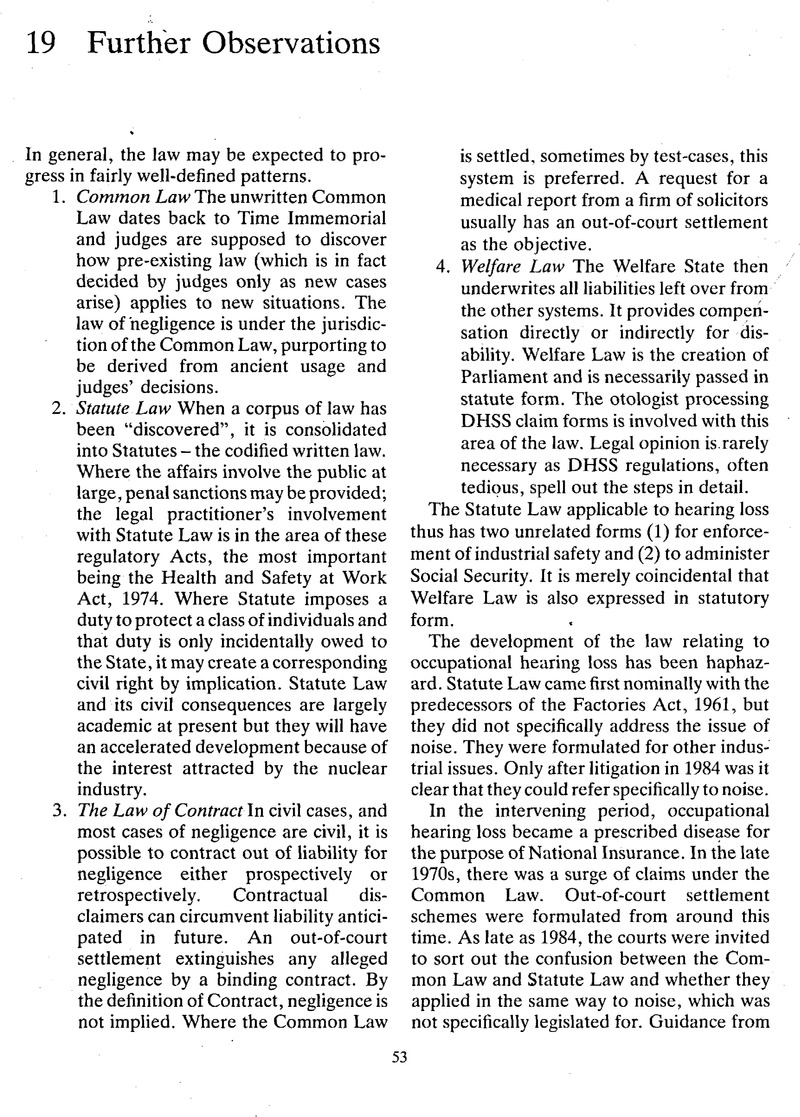No CrossRef data available.
Article contents
19 Further Observations
Published online by Cambridge University Press: 09 November 2023
Abstract

- Type
- Other
- Information
- The Journal of Laryngology & Otology , Volume 100 , Issue S11: Forensic Audiology , 1986 , pp. 53 - 55
- Copyright
- Copyright © JLO (1984) Limited 1986
References
[1] We were deciding what formula California should use. Management went along with the medical profession and said they wanted 500,1000 and 2000 Hz used; but Labour, seeing the large losses at 4000, wanted 4000 Hz included. The fight became so bitter they almost came to blows. The man who was sitting on the bench didn't want to offend anybody … ‘I think we'll compromise, and take 3000 Hz which is halfway between 2000 and 4000 and we'll add it to the formula.’ That is how California got 3000 Hz in its formula: it had nothing to do with the scientific merits.” (Glorig, 1970).
[2] There is too much pre-occupation with the 4 kHz frequency. In separate studies by W.D. Ward, H. Davis, A. Glorig and others, the less dramatic 2 kHz emerges as having the best correlation with disability. An arguable legal and scientific case can be made for basing disability assessment on the 2 kHz frequency alone. Co-existing otosclerosis is not relevant in law. A paper by Alberti et al (1980) suggests that otosclerosis may not be relevant to NIHL either. 2 kHz alone is no more arbitrary than multi-frequency averaging. In some cases, 3 kHz influences hearing in noisy surroundings, but any arbitrary compensation system must allow for alternative assessment.




